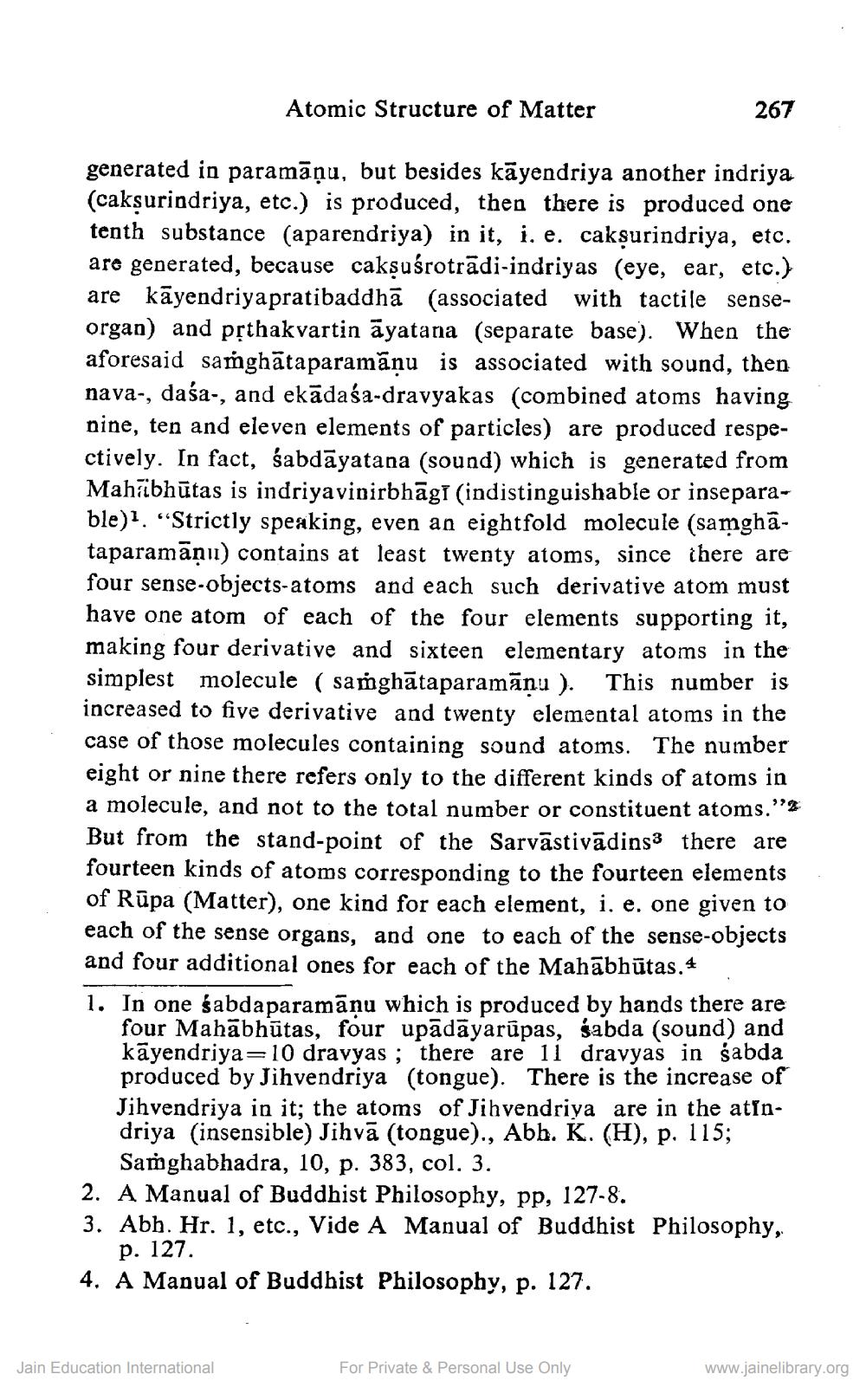________________
Atomic Structure of Matter
267
generated in paramāņu, but besides kāyendriya another indriya (caksurindriya, etc.) is produced, then there is produced one tenth substance (aparendriya) in it, i. e. cakşurindriya, etc. are generated, because cakşuśrotrādi-indriyas (eye, ear, etc.) are kāyendriyapratibaddhā (associated with tactile senseorgan) and prthakvartin āyatana (separate base). When the aforesaid samghātaparamānu is associated with sound, then nava-, daśa-, and ekādaśa-dravyakas (combined atoms having nine, ten and eleven elements of particles) are produced respectively. In fact, śabdāyatana (sound) which is generated from Mahābhūtas is indriyavipirbhāgi (indistinguishable or inseparable)?. "Strictly speaking, even an eightfold molecule (samghataparamāņu) contains at least twenty atoms, since there are four sense-objects-atoms and each such derivative atom must have one atom of each of the four elements supporting it, making four derivative and sixteen elementary atoms in the simplest molecule ( samghātaparamānu ). This number is increased to five derivative and twenty elemental atoms in the case of those molecules containing sound atoms. The number eight or nine there refers only to the different kinds of atoms in a molecule, and not to the total number or constituent atoms.??? But from the stand-point of the Sarvāstivādins3 there are fourteen kinds of atoms corresponding to the fourteen elements of Rūpa (Matter), one kind for each element, i. e. one given to each of the sense organs, and one to each of the sense-objects and four additional ones for each of the Mahābhūtas. 1. In one śabdaparamānu which is produced by hands there are
four Mahābhūtas, four upādāyarūpas, sabda (sound) and kāyendriya=10 dravyas ; there are 11 dravyas in sabda produced by Jihvendriya (tongue). There is the increase of Jihvendriya in it; the atoms of Jihvendriya are in the atindriya (insensible) Jihvā (tongue)., Abb. K. (H), p. 115;
Samghabhadra, 10, p. 383, col. 3. 2. A Manual of Buddhist Philosophy, pp, 127-8. 3. Abh. Hr. 1, etc., Vide A Manual of Buddhist Philosophy,
p. 127. 4. A Manual of Buddhist Philosophy, p. 127.
Jain Education International
For Private & Personal Use Only
www.jainelibrary.org




